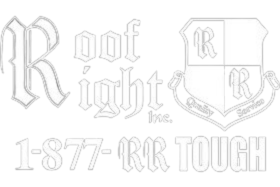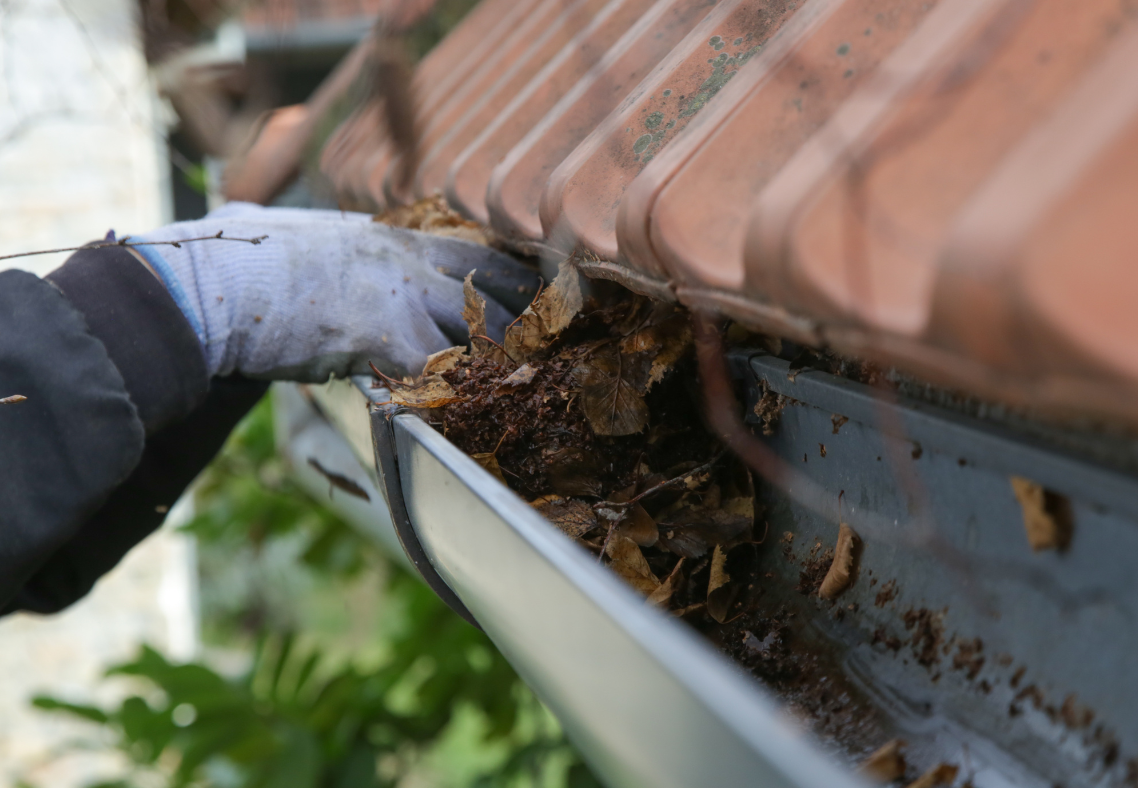Can Clogged Gutters Cause Roof Leaks To My Maryland Home?
Roof Right: Exterior Home Remodeling Specialists in Maryland Contact UsSchedule A Free EstimateIf you live in Maryland, you know how important gutters are for protecting your home. They collect rainwater from your roof and guide it safely away from walls, fascia, and foundation. But when gutters become clogged with leaves, twigs, pine needles, or debris, they can no longer do their job. Over time clogged gutters can lead to serious roof leaks, structural damage, and expensive repairs. In this article, we’ll explain how clogged gutters contribute to roof leaks in Maryland, what warning signs to look for, and what homeowners can do to protect their roofs.
Answering The Question: Can Clogged Gutters Cause Roof Leaks to My Maryland Home?
How Clogged Gutters Cause Roof Leaks
1. Overflowing Water Backing Up Under the Roof Edge
One of the most straightforward ways clogged gutters lead to roof leaks is via overflow. When the downspout or gutter channel is blocked, rainwater pools and overflows the gutter edge. That overflow water can back up under the shingles, soak through the underlayment, and infiltrate the roof deck or attic. It often enters where shingles overlap or where flashing is not perfectly sealed. Over time, repeated backup stresses roofing materials. This phenomenon is frequently cited in roofing guides as a direct cause of leaks.
2. Ice Dams and Freeze‑Thaw Cycles
In Maryland winters, clogged gutters worsen the risk of ice dams. When snow melts on the warm portion of your roof and then refreezes at the eaves (where gutters are), it forms a barrier of ice. That barrier traps water behind it, forcing that water under shingles, into flashing, or into the roof system. Over time, trapped water penetrates and causes leaks, damage, or rot. Roofing contractors in Maryland list clogged gutters as a factor that increases the likelihood of ice dams and thus leaks.
3. Saturation, Rot, and Fascia Damage
Clogged gutters cause water to spill over the edges rather than being routed away. That spilled water frequently saturates fascia boards (the wood behind gutters) and soffits (under the eaves). Saturated wood begins to rot or degrade and loses its ability to support gutters or maintain the waterproof barrier at the roof edge. As wood rots, gaps may form that allow water into the roof structure or attic. Roof Right itself notes that gutter debris “causes rainwater to pool on the roof or back up beneath your shingles” and promotes deterioration of roofing materials.
4. Stress on Flashing, Shingles, and Roof Materials
When water is not diverted properly by gutters, excess moisture sits adjacent to roofing edges. That moisture stresses flashing, seams, valley areas, and roof penetrations (vents, skylights). Over time, flashing can loosen, sealants can degrade, and shingles can shift or lift. Gutter overflow also accelerates granule loss on shingles, weakening them and making them more vulnerable to leaks.
5. Hidden, Slow Leaks and Attic Moisture Intrusion
Because clogged gutters slowly allow water intrusion, leaks may begin in hidden areas—behind drywall, in attic sheathing, or between rafters. By the time you see interior stains or damp insulation, damage may already be underway. Attic mold, musty smells, or warped ceiling joints often trace back to chronic leakage caused or exacerbated by clogged gutters.
Warning Signs That Your Gutters Are Causing Roof Leaks
Maryland homeowners should watch for signs that clogged gutters may be contributing to roof leaks:
- Water overflowing from gutters even in moderate rain, instead of channeling down the downspouts
- Stains or discoloration along the roof edge, fascia, or siding below the eaves
- Dark patches, water stains, or bubbling paint on ceilings or in the attic space
- Moss or algae growth near gutter edges or roof edges (indicating persistent moisture)
- Sagging gutters or sections pulling away from the fascia
- Cracked or rotted fascia, soffits, or fascia boards
- Ice buildup along roof edges in winter (ice dams forming)
- Small streams of water creeping behind gutters or along the roof line
Why Maryland Homes Are Especially Vulnerable
Maryland has climate characteristics that make clogged gutters a larger threat to roof integrity than in more temperate areas:
- High rainfall and storms: Maryland sees significant rain, which overloads gutters more frequently.
- Heavy leaf shedding in fall: Many homes in Carroll, Baltimore, Howard, and Frederick counties are surrounded by trees that drop leaves and twigs, clogging gutters quickly.
- Winter freeze‑thaw cycles: The state often sees melting snow combined with refreezing, which exacerbate ice dams when gutters are impaired.
- Humidity and mold risk: Persistent moisture in clogged gutters encourages mold growth that can spread to attic structures.
- Aging homes and older gutter systems: Many Maryland homes have older gutters with multiple joints, sections, or aging material that is more vulnerable to clogging and failure.
What You Can Do to Prevent Gutter‑Related Roof Leaks
To protect your Maryland home’s roof from leak risks caused by clogged gutters, here are key steps:
1. Clean Gutters Frequently
Make it a routine to clean gutters at least twice a year—typically in spring (after winter debris) and in late fall (after leaves have dropped). In high‑tree areas, you may need a third cleaning in mid‑fall. Remove leaves, sticks, dirt, and nests that may block flow. New England Metal Roof recommends cleaning and flushing gutters so they no longer pool water or overflow.
2. Flush and Test Downspouts
After clearing debris, flush gutters with a garden hose to confirm water flows freely to downspouts. Use a plumber’s snake or rod to clear internal downspout blockages if water is slow. Ensure downspouts discharge water several feet away from the foundation and roof edges.
3. Maintain Proper Gutter Slope
Gutters should be slightly pitched so water flows toward downspouts. Poor pitch results in pooling and clogs. Incorrect slope contributes to overflow and leaks. This is one of the defects noted in guides showing how bad gutters lead to leaks.
4. Repair or Replace Damaged Gutters
Fix cracks, holes, sagging sections, detached gutters, leaking seams, and failing end caps. These defects allow water to spill prematurely or saturate wood. Because Maryland’s freeze‑thaw cycles worsen small defects over time, prompt repair is important.
5. Install Gutter Guards or Screens
While guards are not a cure-all, they reduce the volume of debris entering gutters and make cleaning easier and less frequent. Many Maryland homeowners install leaf guards especially under heavy tree canopies. But be careful—the wrong guard installed poorly can itself damage shingles or trap water.
6. Maintain Roof Edge, Flashing, and Underlayment
Ensure flashing, drip edges, and roofing edges under gutters are properly sealed and integrated. Even with perfect gutters, if flashing fails or water can creep behind the edges, leaks can occur. A holistic approach to roof edge integrity is key.
7. Monitor and Inspect Annually
During rainy weather, look for overflow or drips near gutters. After storms, inspect gutter performance. In spring, check for damage from ice or winter storms. Regular inspections help catch problems early before they lead to leaks.
When a Professional Should Get Involved
Some gutter or roof conditions demand professional attention:
- Your home is two or more stories tall or difficult to access safely
- Leaks persist even after you clean your gutters
- You notice structural damage, fascia rot, or compromised roof edges
- You need gutter replacement, seamless systems, or major reworking
- You want reliable diagnosis of hidden roof leaks or attic moisture
Hiring a licensed roofing and gutter contractor ensures proper technique, safe access, correct materials, and lasting results.
Contact Roof Right For A Gutter Cleaning Services In Maryland
If you live in Hampstead, Carroll County, Baltimore County, or elsewhere in Maryland and have concerns about your gutters causing roof leaks don’t wait until water shows through ceilings. Contact Roof Right for gutter cleaning services in Maryland. Our experienced team will clear debris, flush downspouts, inspect your gutter system for defects, and ensure your roof edge is protected from water overflow. We understand Maryland’s seasonal challenges and tailor our work to guard your home from leaks, rot, and water damage. Let us help you preserve the integrity of your roof and your home. Reach out today and schedule your gutter cleaning before the next major storm.
Areas We Serve
If you're looking for a roof contractor in Maryland, give Roof Right a call today at (410)-374-5923 to schedule an appointment!
Carroll County
Howard County
Clarksville, Columbia, Elkridge, Ellicott City, Fulton, Jessup, Laurel, Woodstock
Montgomery County
Baltimore County
Baldwin, Bradshaw, Carney, Cockeysville, Glen Arm, Hunt Valley, Jacksonville, Kingsville, Lutherville, Nottingham, Overlea, Owings Mills, Parkton, Parkville, Perry Hall, Phoenix, Pikesville, Reisterstown, Sparks, Timonium, Towson, White Marsh

